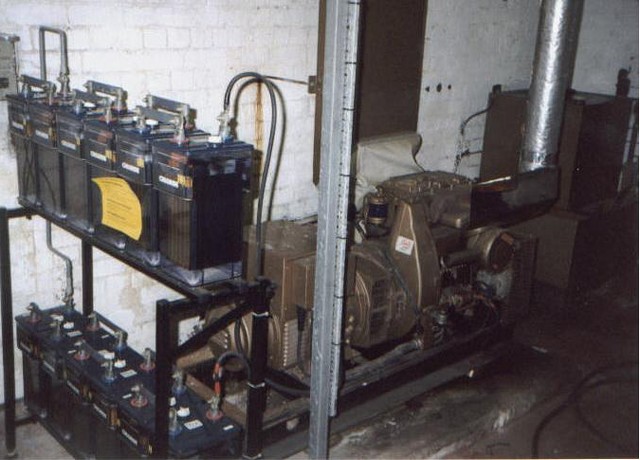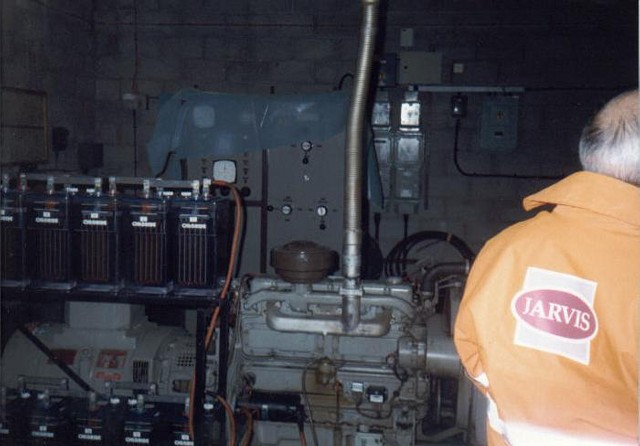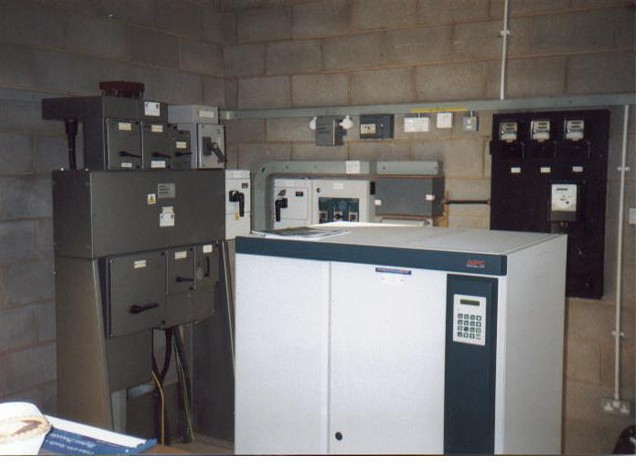This website has been archived from TrainWeb.org/railengineering to TrainWeb.US/railengineering.
|
Home
Corporate Induction
Plant Maintenance
|
Signalling Supply Points
At Signalling Supply Points (SSP's), there are power supplies, as well as backup generators, incorporating Uninteruptable Power Supplies (UPSs). Standby Generators Where a signalling supply from the Regional Electricity Board (REB) is present, a standby generator is always present for emergencies. As the signals are supplied by 650V of DC the generators are configured to have an output of 650V. The purpose of the generator is to maintain power should the power supply from the REB fail. It takes approximately 10-15 seconds for the diesel generator to start up once the mains supply fails. All the signals within the catchment area will black out for this duration. Once the generator starts up and gains speed, the signals come back on line, except that they all go to red. This is known as a right side failure, but can cause category B Signals Passed At Danger (cat B SPADS). If a train driver sees that a green signal has just blacked out and come back on as red, the driver will activate the emergency breaks. As a train stops over a long distance, the red signal is sometimes passed. Standby generators can be seen in the pictures below.


Standby generators run on diesel and it is up to the contractor to make sure that the fuel
tank is kept full. The generators run on what is known as pink diesel rather than Diesel
Engine Road Vehicle (DERV), which is the fuel found at roadside petrol stations. The reason
for using pink diesel is due to economics. No tax is paid on 'pink' diesel since the
generator that uses it is not found on the public roads.
There is only one way to prevent cat B SPADS due to mains failures, and that is to use a UPS.
Un-interruptible Power Supplies
The UPS maintains power for the duration of time it takes for the standby generator to start
up. The UPS can basically be described as a large bank of batteries.
There are two kinds of UPS's present across the railway infrastructure; these being
400V and 650V. The 400V UPS was developed first, it was later that the more expensive 650V
UPS was developed. A 400V UPS can be seen below.

The Church Fenton UPS is 650V while the one at Colton is only 400V. I went out to
the Church Fenton UPS and experienced the commissioning of it during the night: this
being the first 650V UPS on the zone. The commissioning basically consisted of failing
the mains, preventing the generator from coming on, and seeing how long the batteries lasted
for in the ups. This is approximately 25 minutes.
400V
The 400V UPS is not as effective as the 650V. This is due to the layout of the entire SSP.
If the mains supply were to fail, the UPS would take load for the duration. Once the
batteries ran out, there would be a 10-12 second blackout while the generator started up.
Therefore, the 400V ups is more ideal for power blips rather than total mains failure.
650V
Being the more efficient UPS, it would be better if this were the common one across the
zone. However only one exists since it is more expensive than the 400V UPS. If there
were to be a mains power failure, the UPS would take load while the standby generator
started up. When the generator starts, the UPS would then put the load across to the
generator. If the generator failed to start, the UPS would maintain power for the duration
of the batteries.
The schematics of the SSP's incorporating different UPS's are shown below.

|














